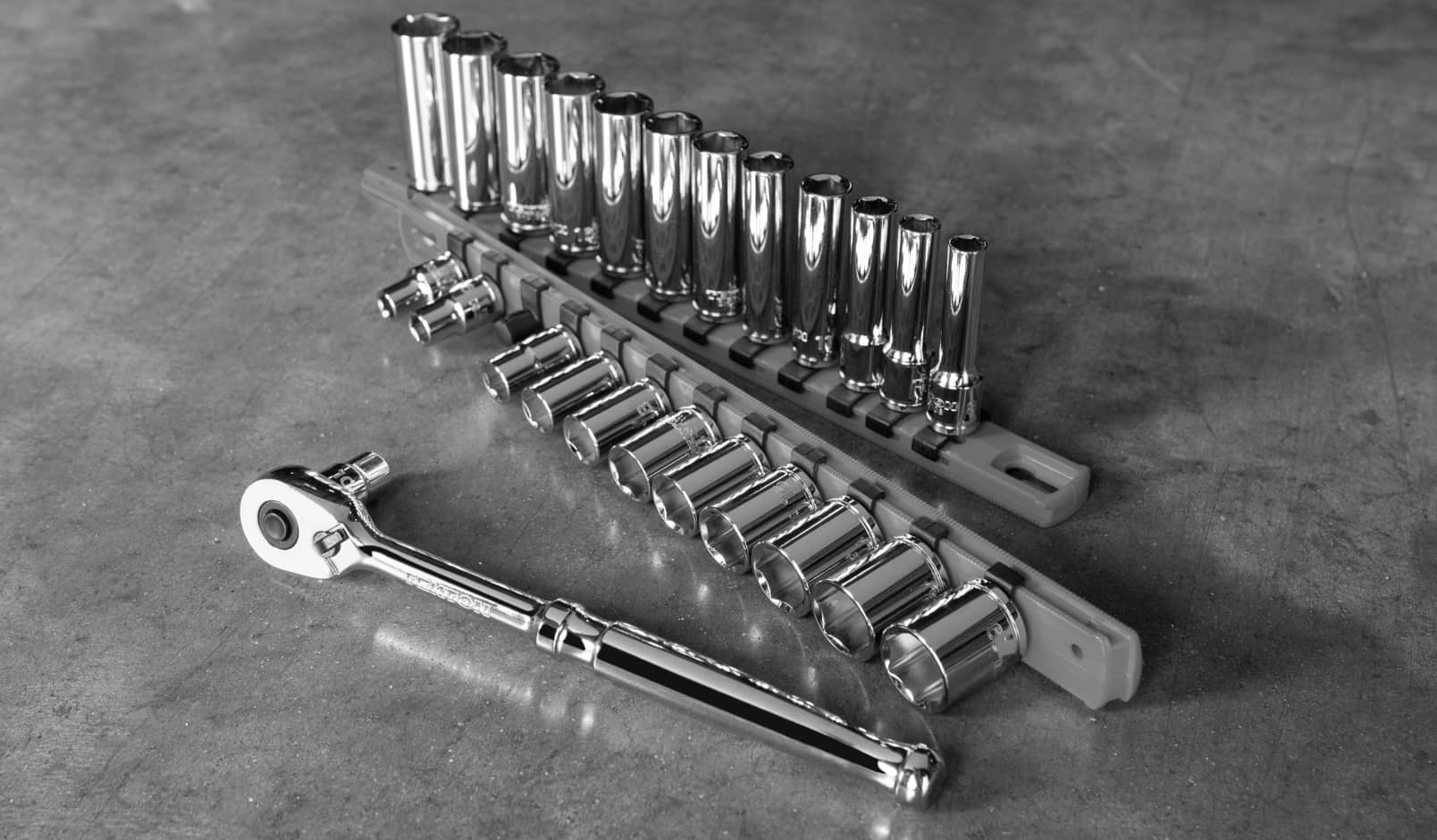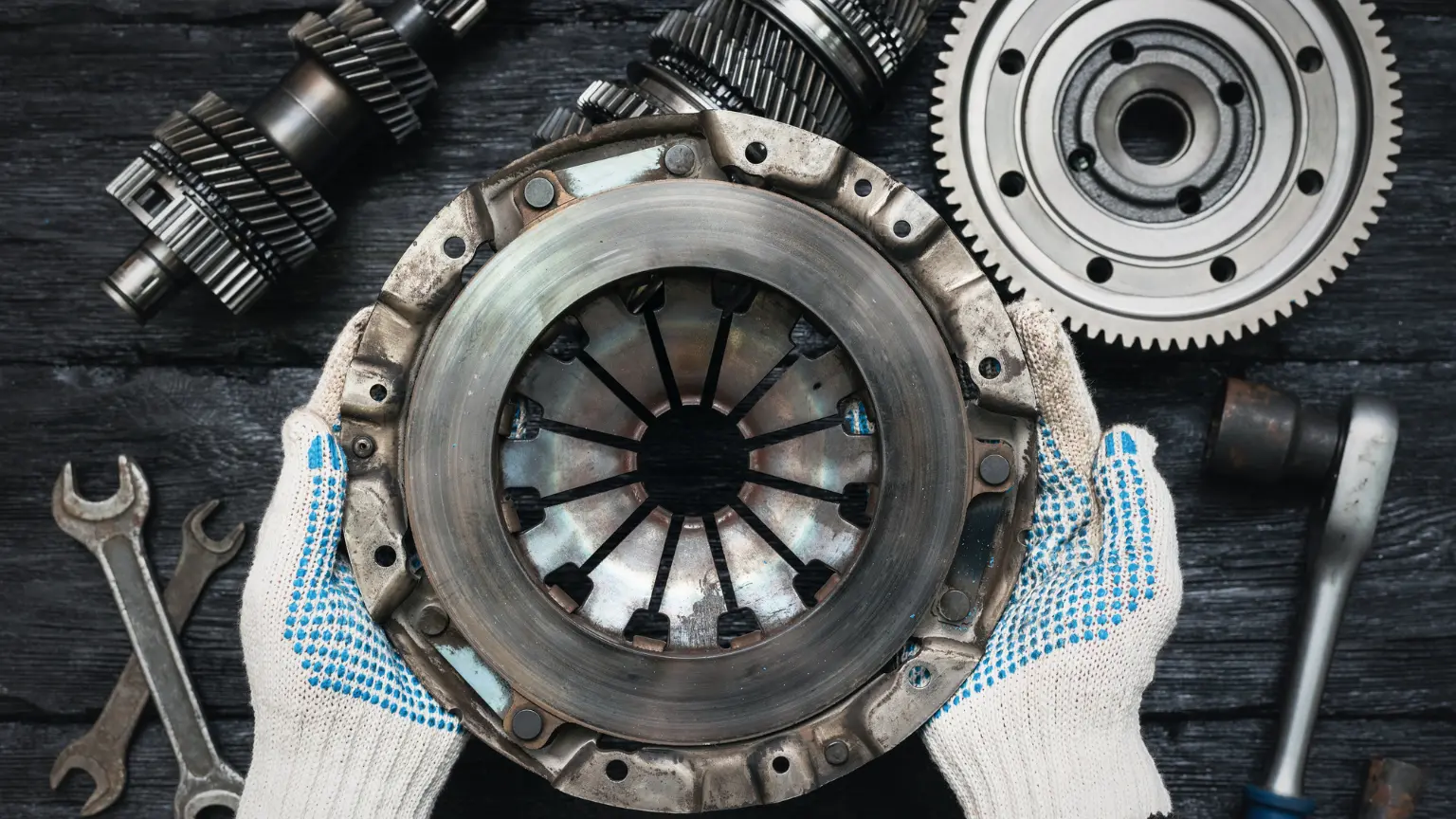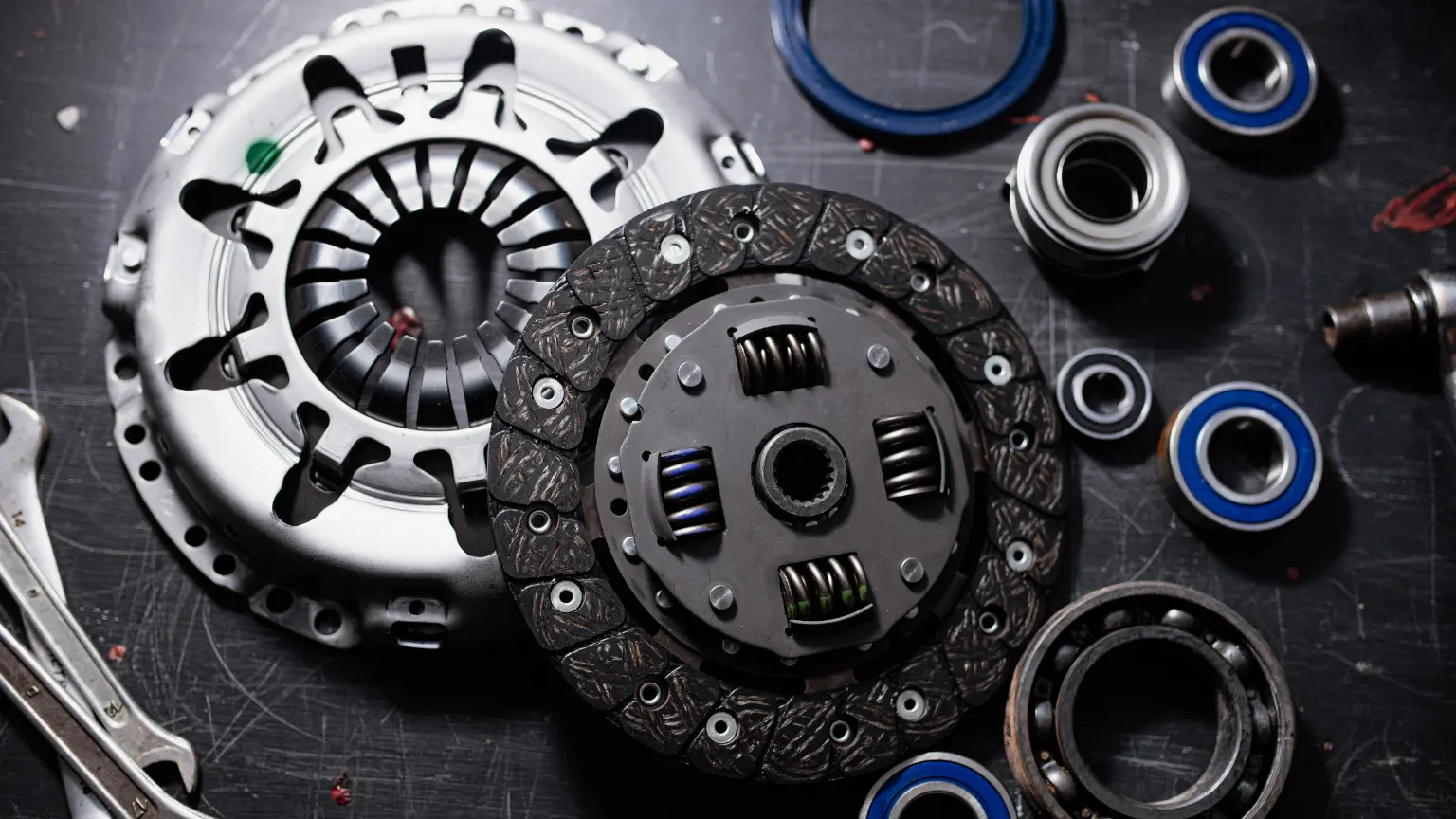Transmission Rebuilds: Costs & Benefits Explained
Learn how transmission rebuilds restore power transfer efficiency by disassembling, diagnosing, replacing worn parts, and reassembling—ensuring smoother shifts and extended vehicle life.

Transmission rebuilds are a crucial aspect of vehicle maintenance, often overlooked until issues arise. The transmission is a complex component of any vehicle, responsible for transferring power from the engine to the wheels. Over time, this vital part undergoes wear and tear, leading to the need for either repair or replacement. Transmission rebuilds, explained simply, involve disassembling the transmission, identifying damaged or worn parts, replacing them, and reassembling the whole unit. This process ensures that your vehicle continues to perform efficiently, making it a valuable investment for any car owner.
Signs of Transmission Problems
Recognizing common symptoms and indicators of a failing or defective transmission that may prompt consideration of rebuilding is essential for preventing more extensive damage to your vehicle. One of the most common symptoms of a failing transmission is difficulty shifting gears. This can present as hesitation, slipping out of gear, or rough, jerky transitions when the vehicle changes gears. Drivers may also notice delayed engagement, where there is a noticeable lag when shifting from park to drive or reverse. Unusual noises are another red flag; grinding, whining, or clunking sounds coming from the transmission area often indicate internal component wear or damage. Additionally, a burning smell can signal overheating or deteriorating transmission fluid, both of which can lead to serious transmission issues if not addressed promptly. Leaking transmission fluid, which typically appears as a reddish or brownish puddle beneath the vehicle, is a clear indicator that the transmission system is compromised and may be losing the lubrication and hydraulic pressure necessary for proper operation. Other indicators include the illumination of the “check engine” light, unexpected surges or lags in acceleration, and vibrations or shuddering while driving. If you experience any of these symptoms, it’s essential to have your vehicle inspected by a qualified technician as soon as possible. Addressing transmission problems early can help avoid total failure. It may make rebuilding a more cost-effective and viable option, restoring your vehicle’s performance and reliability while extending its overall lifespan.
Breaking Down the Transmission Rebuilds Cost
When considering a transmission rebuild, one of the first questions that comes to mind is the cost. The average cost of transmission rebuild can vary widely based on several factors. Typically, vehicle owners can expect to spend anywhere from a few hundred to several thousand dollars. This cost variation is due to differences in transmission types, vehicle models, and the extent of the damage. It's important to note that while upfront costs might seem high, a rebuild can be a more cost-effective solution in the long run compared to a complete replacement. A multitude of factors can influence the cost of a transmission rebuild, each contributing to the final price you pay. Here's a list of the key elements that affect the cost:
- Type of Vehicle: Different vehicles have varying transmission systems. For example, luxury cars or those with complex systems may incur higher rebuild costs.
- The Extent of Damage: The more extensive the damage to the transmission, the more parts and labor will be required, increasing the cost.
- Parts Replacement: Some parts may be more expensive than others, and the need for rare or high-end components can drive up the price.
- Labor Costs: The skill level and rates of the technician performing the rebuild play a significant role in the overall cost.
- Geographic Location: Labor and parts costs can vary based on your location, with urban areas often having higher rates.
- Warranty and Service Quality: Opting for a rebuild with a warranty or from a reputable service provider might cost more upfront, but can offer better value in the long run.
Understanding these factors is key to getting a realistic estimate for a transmission rebuild. It's not just about finding the most affordable transmission rebuild; it's about understanding where your money is going and ensuring you're investing in quality work that prolongs your vehicle's lifespan and performance.
When faced with transmission problems, a common dilemma is choosing between a transmission rebuild and replacement. While a replacement involves installing a new or remanufactured transmission, a rebuild consists of repairing the existing one. Generally, a rebuild can be more cost-effective than a replacement, especially if the damage isn't extensive. Replacements might offer a quicker solution but often come at a higher cost, particularly for newer or more complex vehicles.
For those on a budget, finding an affordable transmission rebuild is essential. However, it's important to balance cost with quality. Seeking quotes from multiple service providers, checking reviews, and asking for recommendations can help in finding a reliable service at a reasonable price. Additionally, understanding the scope of the rebuild and discussing it with the technician can prevent unexpected expenses. Remember, the cheapest option isn't always the best in the long run; prioritize a balance between affordability and quality to ensure a worthwhile investment in your vehicle's health.
Benefits of Transmission Rebuilds
A significant benefit of transmission rebuilds is the noticeable improvement in vehicle performance. A rebuilt transmission can restore your car's acceleration, shifting smoothness, and overall driving experience to its original state, if not better. This enhancement is particularly evident in vehicles that have experienced transmission-related issues such as slippage, delayed shifting, or unusual noises.
Transmission rebuilds play a pivotal role in extending the lifespan of both the transmission and the vehicle as a whole. By replacing worn or damaged parts during a rebuild, the likelihood of future transmission problems is significantly reduced. This proactive approach not only extends the transmission's life but also contributes to the overall health of the vehicle. Regular transmission maintenance, including rebuilds when necessary, ensures that other vehicle components aren't strained by a failing transmission, thereby preserving the vehicle's integrity and performance for a longer period.
An often-overlooked advantage of transmission rebuilds is their positive impact on fuel efficiency. A well-functioning transmission allows for smooth and efficient power transfer from the engine to the wheels. When transmission issues are resolved through a rebuild, the engine doesn't have to work as hard, leading to better fuel economy. This increase in efficiency not only saves money on fuel costs over time but also contributes to a smoother driving experience.
From an environmental perspective, opting for a transmission rebuild rather than a new installation can be a more sustainable choice. Rebuilding a transmission utilizes fewer resources and generates less waste compared to manufacturing and installing a new unit. By refurbishing existing components, the need for new raw materials is reduced, thereby lessening the environmental impact. This aspect of transmission rebuild value aligns with the growing interest in sustainable practices in vehicle maintenance and repair.
Cost-Effective Gearbox Overhaul Techniques
A crucial step in a cost-effective gearbox overhaul involves identifying and selecting affordable yet reliable parts. It's essential to strike a balance between quality and cost. Opting for cheaper components might save money initially, but can lead to more frequent repairs in the long run. On the other hand, high-end parts might offer better durability but can significantly increase the overall cost. Embarking on a gearbox overhaul can be daunting, but understanding transmission rebuild costs can simplify it. Here's a step-by-step guide to help you understand what's involved:
- Assessment: The foundational first step is a thorough and meticulous assessment of the gearbox. This involves a comprehensive diagnostic check, often including fluid analysis, visual inspection for external damage, and listening for unusual noises during operation. The goal is to accurately identify the extent and nature of wear, damage, or malfunction within the gearbox. This initial assessment guides the entire repair process, determining which components require attention and the potential scope of the overhaul.
- Disassembly: Following the assessment, the gearbox is carefully and systematically disassembled. This process requires precision and attention to detail, as each component is carefully removed. It's crucial to catalog each part, noting its original position and apparent condition. This meticulous cataloging is vital for proper reassembly and helps identify worn or damaged components that may not be immediately obvious. Proper labeling and organization of parts during disassembly significantly streamline the subsequent steps.
- Cleaning: Once disassembled, all parts undergo a rigorous cleaning process to remove accumulated dirt, grime, metallic particles, and old lubrication. This step is absolutely crucial for a clear and accurate inspection of each component. Residue can obscure cracks, wear patterns, and other critical damage indicators.
- Inspection: After thoroughly cleaning the parts, a detailed inspection is performed on each individual component. This comprehensive examination includes scrutinizing gears for pitting, scoring, or chipped teeth; bearings for roughness, discoloration, or excessive play; shafts for straightness and spline integrity; and all other internal components for signs of wear, fatigue, or damage. Seals and gaskets are inspected for brittleness, cracking, or signs of leakage. This critical step determines which parts need to be replaced and which can be reused, directly impacting the overall cost and longevity of the rebuild.
- Replacement of Parts: Based on the thorough inspection, worn or damaged parts are replaced with quality, cost-effective alternatives. As mentioned earlier, selecting replacement parts is paramount. It's not always about opting for the cheapest option but instead finding a balance between durability, reliability, and price. Crucially, it's essential to replace all seals and gaskets, regardless of their apparent condition. These components are prone to degradation over time and are vital for maintaining a tight, leak-free seal within the gearbox. Reusing old seals and gaskets is a common cause of premature leaks and subsequent gearbox failure.
- Reassembly: Each part must be carefully reinstalled in its correct position, ensuring proper alignment, torque settings, and clearances. Lubrication specifications must be followed precisely. Any misalignment or incorrect installation can lead to premature wear, increased friction, and ultimately, gearbox failure. This step often requires specialized tools and expertise to ensure optimal performance.
Testing: Once reassembled, the gearbox undergoes rigorous testing to ensure it functions correctly and reliably. This can involve bench testing, where the gearbox is run under controlled conditions to check for proper shifting, engagement, and power transfer. It's crucial to monitor for any leaks, unusual noises, excessive heat generation, or vibrations. Load testing may also be performed to simulate real-world operating conditions. This final testing phase validates the quality of the rebuild and confirms that the gearbox is ready for service, minimizing the risk of immediate post-overhaul issues.
Deciding between a DIY gearbox overhaul and hiring a professional involves a cost-benefit analysis. A DIY approach can save on labor costs, but it requires a significant investment in tools, time, and knowledge. On the other hand, a professional mechanic brings expertise and efficiency to the task, although at a higher cost. Weighing these factors against your mechanical skill level and budget constraints is crucial in making this decision.
Assessing the Long-Term Value of Transmission Rebuilds
When evaluating the value of transmission rebuilds, it's crucial to consider both short-term and long-term financial implications. Initially, the cost of a rebuild might seem substantial. However, when compared to the long-term benefits, such as avoiding future repairs and improved vehicle performance, the investment often proves to be cost-effective.
An often overlooked advantage of transmission rebuilds is their potential to boost a vehicle's resale value. A well-maintained transmission is a key selling point, assuring potential buyers of the vehicle's reliability and reduced risk of future mechanical problems. Investing in a transmission rebuild can be a smart move for those considering selling their vehicle, as it could significantly increase the vehicle's market value and attractiveness to buyers.
A transmission overhaul offers a range of benefits beyond immediate repair needs. It provides an opportunity to upgrade certain components, potentially enhancing the transmission's performance and durability. When comparing the costs of an overhaul to those of complete replacement or frequent repairs, the overhaul often emerges as a more economical and beneficial option in the long run. The key is to weigh these benefits against the initial costs, considering the specific needs and conditions of your vehicle.
Transmission Maintenance and Repair Advice
Recommendations and best practices are needed for maintaining and repairing transmissions to extend their lifespan and prevent major failures. Deciding to opt for a transmission rebuild versus replacement rests on several factors. A rebuild is often the preferred choice when the damage is not extensive and confined to replaceable parts. It's also a viable option when budget constraints are a concern, as rebuilds are generally more affordable than replacements. If the vehicle is older or has sentimental value, a rebuild can extend its life without the need for a more costly new transmission.
Seeking advice from transmission specialists is a valuable step in making an informed decision. These experts can provide insights into the benefits of transmission rebuilds, the feasibility of a rebuild versus a replacement for your specific vehicle, and the expected longevity and performance post-service. Professional advice can help you weigh the pros and cons, taking into account your vehicle's condition, usage, and financial situation, leading to a decision that best suits your needs.
For vehicle owners facing transmission issues, the key takeaway is to weigh the short-term and long-term implications of your decision. Considering factors like the extent of transmission damage, the age and condition of your vehicle, and your budget will guide you toward the right choice. Regular maintenance and timely rebuilds can significantly extend the life of your transmission, proving to be a valuable investment. Always seek advice from experienced professionals to ensure that your decision aligns with your vehicle’s specific needs and your circumstances. Keep your vehicle running smoothly with expert transmission rebuilds and repairs from Gresham Transmission Medic.
Follow a maintenance program
Ante gravida id aenean quis egestas risus nam amet nullam leo diam diam aliquam eu eu malesuada arcu rhoncus suspendisse nulla mattis ut amet sagittis in justo egestas.

search for a trusted mechanic
Lorem ipsum dolor sit amet, consectetur adipiscing elit lobortis arcu enim urna adipiscing praesent velit viverra sit semper lorem eu cursus vel hendrerit elementum morbi curabitur etiam nibh justo, lorem aliquet donec sed sit mi dignissim at ante massa mattis.
- Neque sodales ut etiam sit amet nisl purus non tellus orci ac auctor
- Adipiscing elit ut aliquam purus sit amet viverra suspendisse potent
- Mauris commodo quis imperdiet massa tincidunt nunc pulvinar
- Excepteur sint occaecat cupidatat non proident sunt in culpa qui officia
Check the air pressure in your tires
Vitae congue eu consequat ac felis placerat vestibulum lectus mauris ultrices cursus sit amet dictum sit amet justo donec enim diam porttitor lacus luctus accumsan tortor posuere praesent tristique magna sit amet purus gravida quis blandit turpis.
Review your suspension frequently
At risus viverra adipiscing at in tellus integer feugiat nisl pretium fusce id velit ut tortor sagittis orci a scelerisque purus semper eget at lectus urna duis convallis. porta nibh venenatis cras sed felis eget neque laoreet suspendisse interdum consectetur libero id faucibus nisl donec pretium vulputate sapien nec sagittis aliquam nunc lobortis mattis aliquam faucibus purus in.
- Neque sodales ut etiam sit amet nisl purus non tellus orci ac auctor
- Adipiscing elit ut aliquam purus sit amet viverra suspendisse potent
- Mauris commodo quis imperdiet massa tincidunt nunc pulvinar
- Excepteur sint occaecat cupidatat non proident sunt in culpa qui officia
Service your vehicle as regularly as posible
At risus viverra adipiscing at in tellus integer feugiat nisl pretium fusce id velit ut tortor sagittis orci a scelerisque purus semper eget at lectus urna duis convallis. porta nibh venenatis cras sed felis eget neque laoreet suspendisse interdum consectetur libero id faucibus nisl donec pretium vulputate sapien nec sagittis aliquam nunc lobortis mattis aliquam faucibus purus in.
“Nisi quis eleifend quam adipiscing vitae aliquet bibendum enim facilisis gravida neque velit euismod in pellentesque”
Conclusion
Eget lorem dolor sed viverra ipsum nunc aliquet bibendum felis donec et odio pellentesque diam volutpat commodo sed egestas aliquam sem fringilla ut morbi tincidunt augue interdum velit euismod eu tincidunt tortor aliquam nulla facilisi aenean sed adipiscing diam donec adipiscing ut lectus arcu bibendum at varius vel pharetra nibh venenatis cras sed felis eget.


